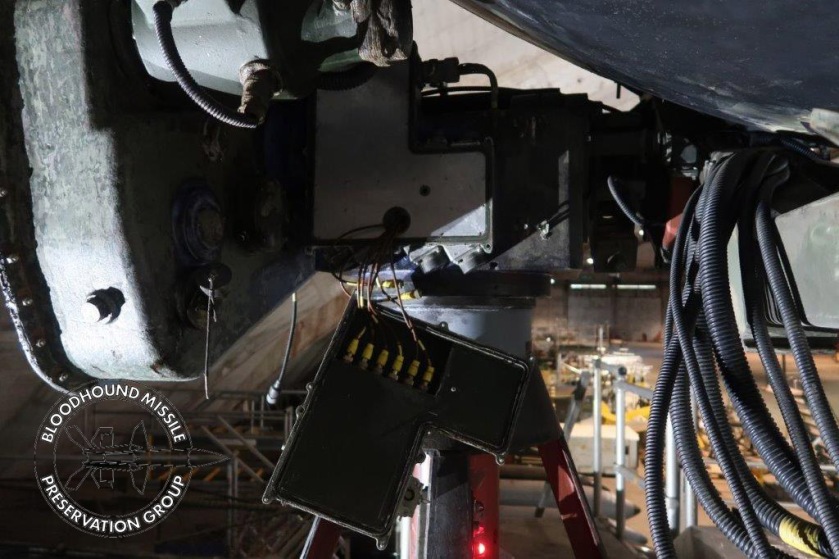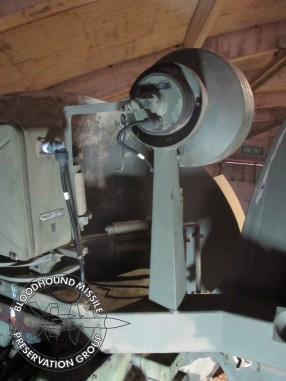T86
Several tasks carried out on the radar:
Top coating the pedestal roof edge after its repair, fitting rivnuts to replace missing captive nuts on the bearing Ward Leonard cover, preparing the internals of the pedestal ready for a repaint and resealing the Inflight Reference Aerial. An accompanying image shows the current condition of the inside of the pedestal, note the main shaft that has had the lose red lead paint removed to expose a lot of the bright steel surface. Obviously red lead paint does not adhere that well to such a surface!

LCP
The simulator was run up and tested by running some engagement exercises; it remains serviceable.
It was also noted that the smell had gone; the RIFA mains filter capacitor that had probably blown in a power supply had done its worst.
Pete


 Many small restoration tasks are regularly carried out and not reported on but one example is included here. All external, steel, threaded studs will have suffered from fifty years plus exposure and the problems come when reusing these studs. The example shown in the accompanying photos show the before and after of a decking securing stud on the roof of the radar. A UNC die is run over the thread to restore it.
Many small restoration tasks are regularly carried out and not reported on but one example is included here. All external, steel, threaded studs will have suffered from fifty years plus exposure and the problems come when reusing these studs. The example shown in the accompanying photos show the before and after of a decking securing stud on the roof of the radar. A UNC die is run over the thread to restore it.

















 Pete H may connect up a mains supply to see if the motor still runs. If that’s OK he will run the motor again when reassembling and video the aerial rotating.
Pete H may connect up a mains supply to see if the motor still runs. If that’s OK he will run the motor again when reassembling and video the aerial rotating.




